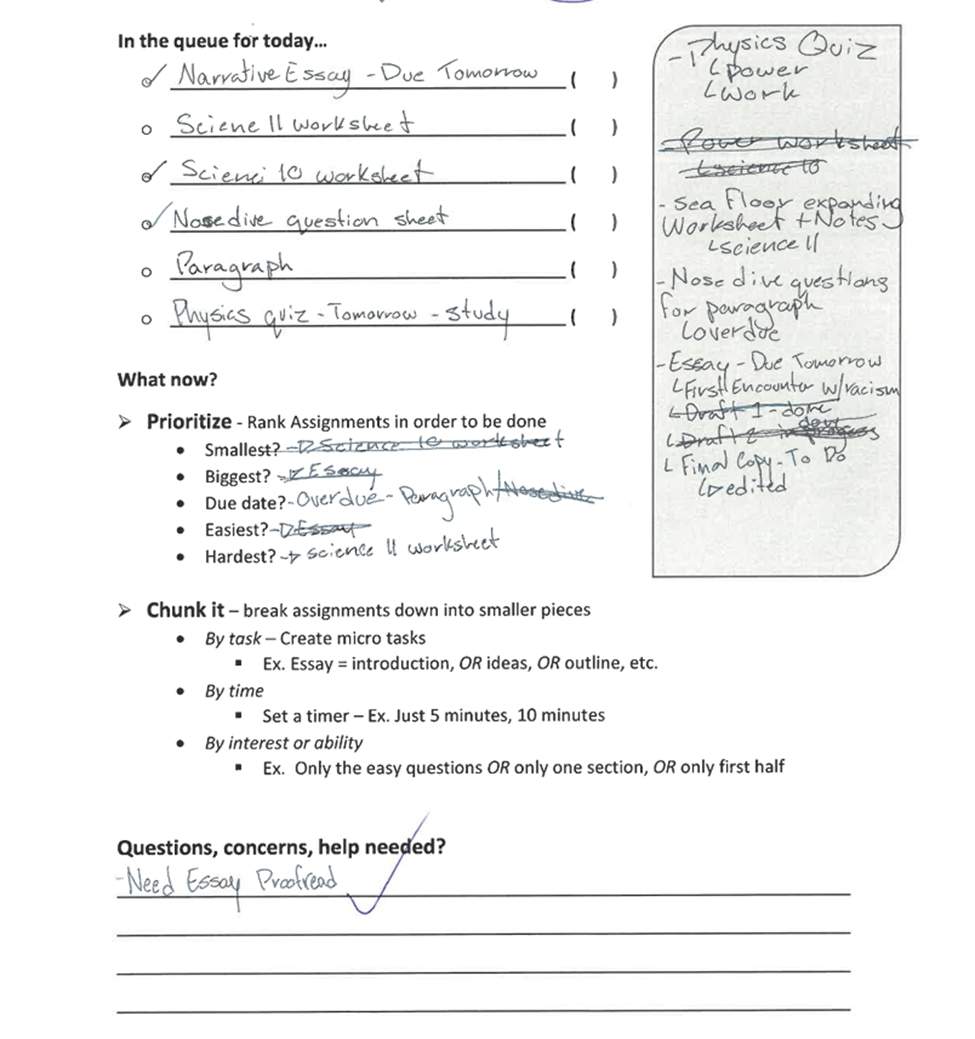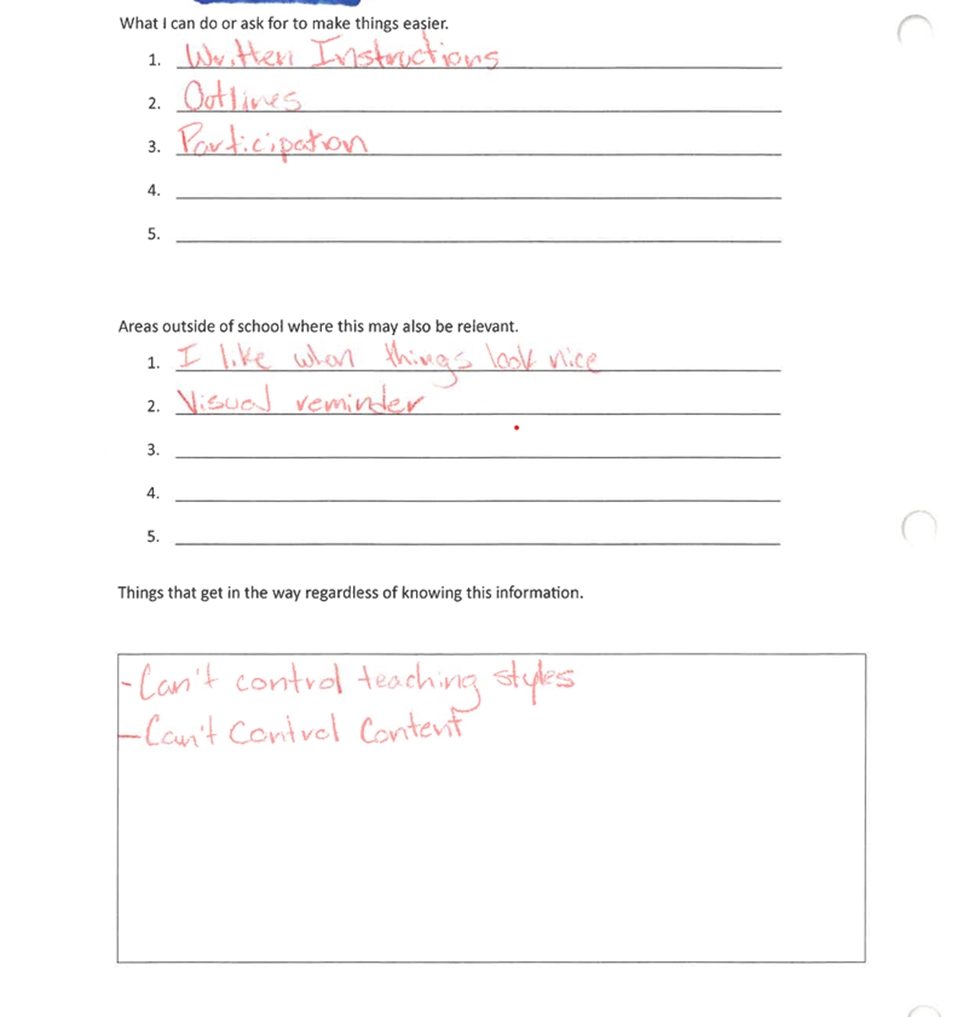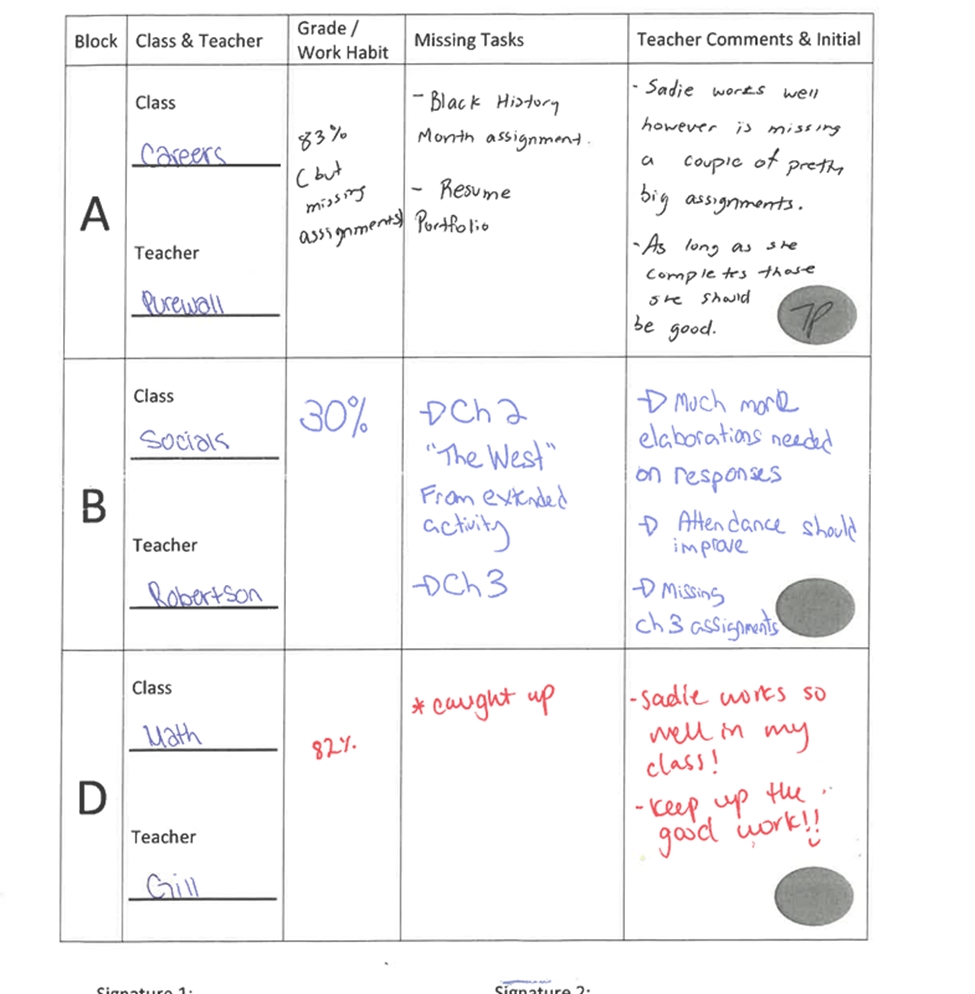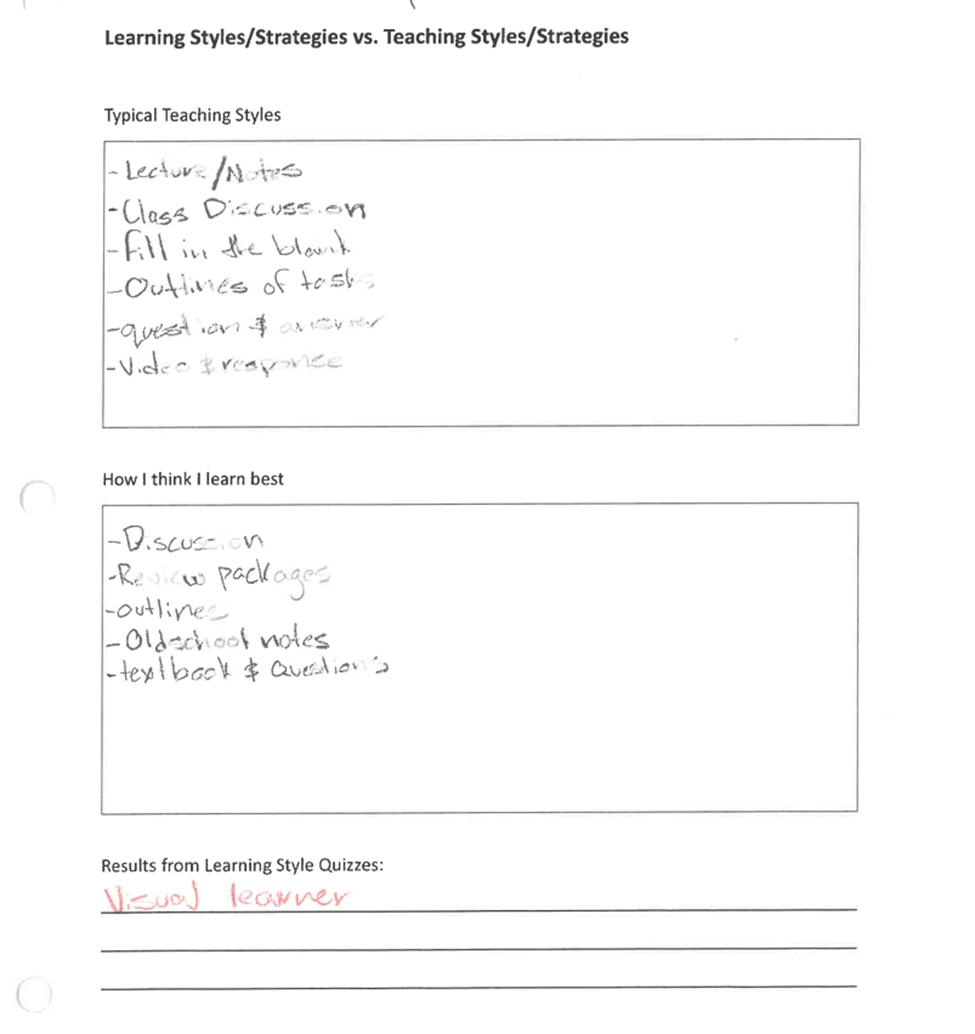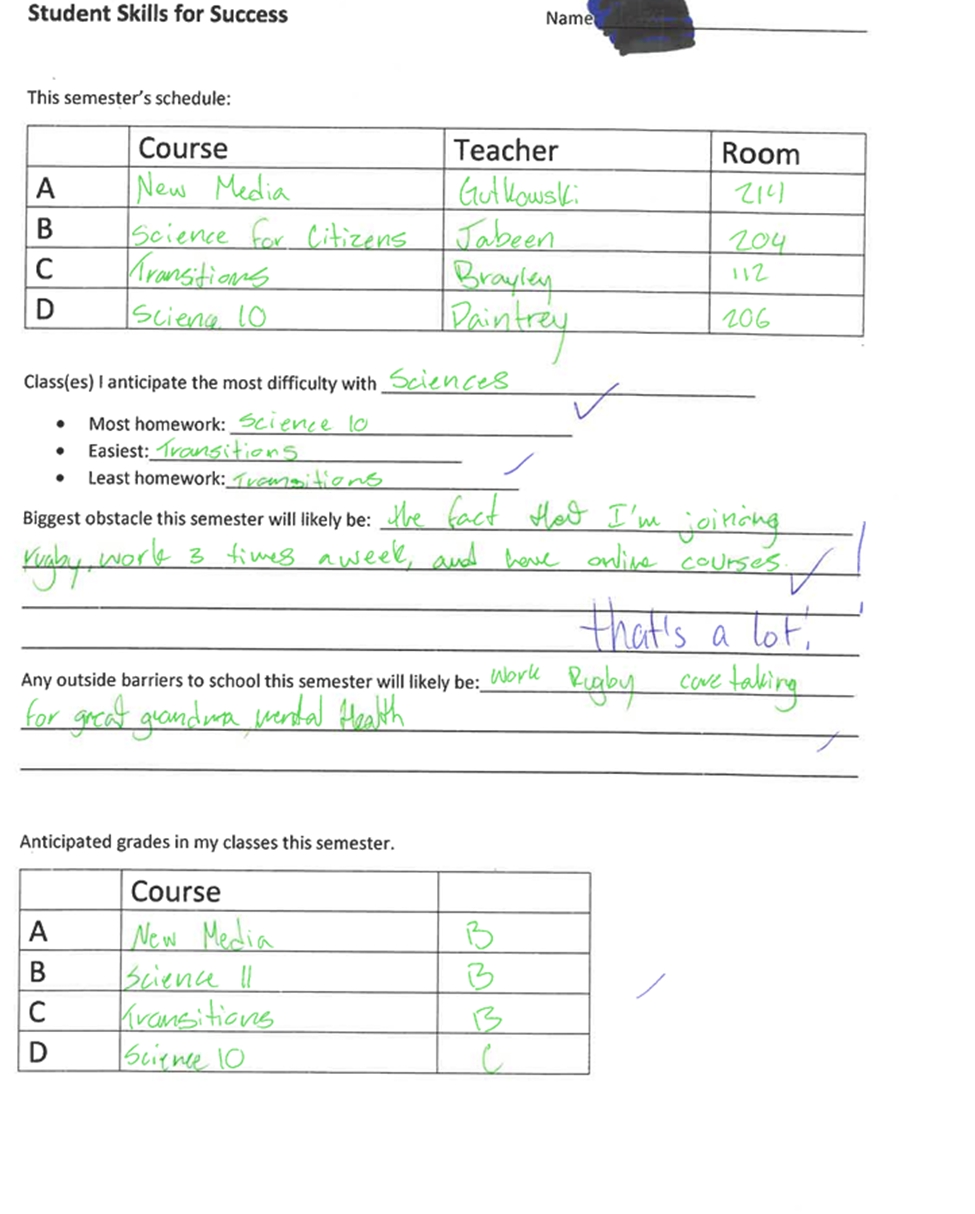Clayton Heights Secondary 24-25


OUR CONTEXT
Clayton Heights Secondary is located on the shared, unceded, traditional territory of the Katzie, Semiahmoo and Kwantlen First Nations. We are a community where all students are encouraged to be inclusive and responsible citizens who participate in intellectual, artistic and athletic pursuits. With the guidance and encouragement of the school community, students are challenged to create, to anticipate and to dream. We as a community believe that our school is for everyone, and that our priority is to encourage students to find their place, based on their passions in that community.
Our students understand and accept their rights and responsibilities as citizens and participate in civic and social groups. They explore social, environmental and technological issues and advancements facing the nation and the world, while developing skills and understandings needed to pursue interests and utilize personal talents. Students are provided the opportunity to investigate career and educational options appropriate to their individual passions. All members of our school community are challenged to better understand the importance of maintaining physical and emotional well-being and develop decision-making, planning and resource management skills needed for their role as critical participants in a democratic society.
Our school is founded on the belief that service learning should be an integral part of all learning experiences. Student leadership programs support all aspects of student leader development, student involvement, and student leadership experiences at school.
OUR LEARNERS
At Clayton Heights, we strive toward creating a school community that is equitable and meets the individual needs of our learners. We believe that positive relationships and connection form the foundation for an environment that is conducive to learning. Students succeed when they feel valued and cared for. Our Student Learning Plan focusses on the development and application of Social-Emotional Learning strategies, which promote student well-being, self-awareness and management, positive relationships, and responsible decision-making.
“SEL programs appear to have as great a long term impact on academic growth as has been found for programs designed specifically to support academic learning.” (Mahoney, Durlak. and Weissberg, 2018)
“SEL is consistently effective across demographic groups; socioeconomic and cultural backgrounds; and urban, suburban, and rural communities both inside and outside of the United States.” (The Aspen Institute)
Supporting students so they can successfully graduate means focusing on the skills needed to be proficient across all subject areas, as well as being competent in the Core Competencies of Communication, Critical and Creative Thinking and Personal and Social Responsibility.
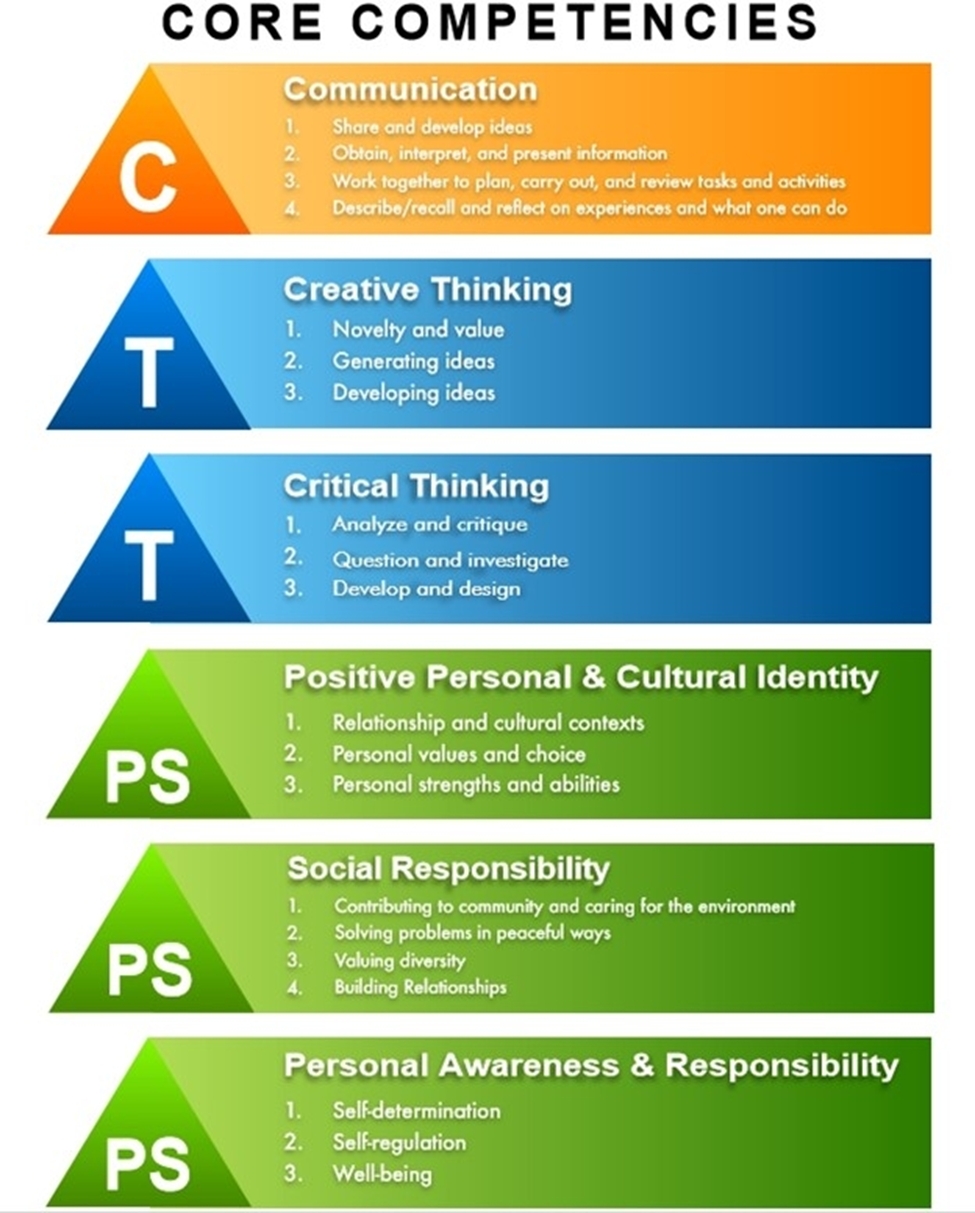
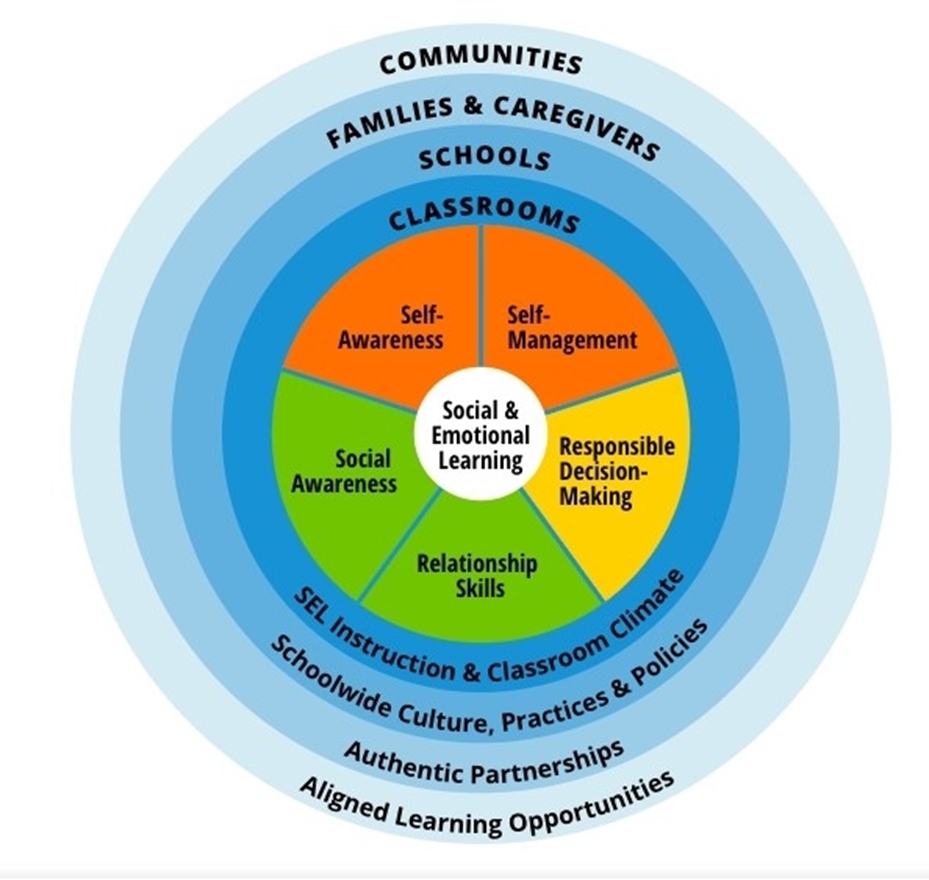
Personal Awareness and Responsibility
Our students can identify their strengths and struggles, both in their learning and in their ability to access knowledge and support at our school.
Our students have also communicated their thoughts on these skills through our student learning surveys. In the 2023/2024 school year, we prompted our students to share how they were feeling given certain questions.

Our student responses give us a clear picture that while many of our students are finding success in these areas, there is additional work for the school to do. For example, if 81% of our student population believes they are developing critical thinking skills, then certainly that percentage is to be celebrated with the knowledge that our work in the classroom is having an impact. However, that also means that nearly one in five students in our school is not believing they are developing these skills, which absolutely needs to be addressed.
Our Students and Mental Health
It is no secret that our society and indeed our schools are becoming more and more aware of our students’ struggles and need for coping strategies in terms of their own mental health. We collected a sample of student learning data to gain a sense of how our current students were feeling with regards to their own mental health.
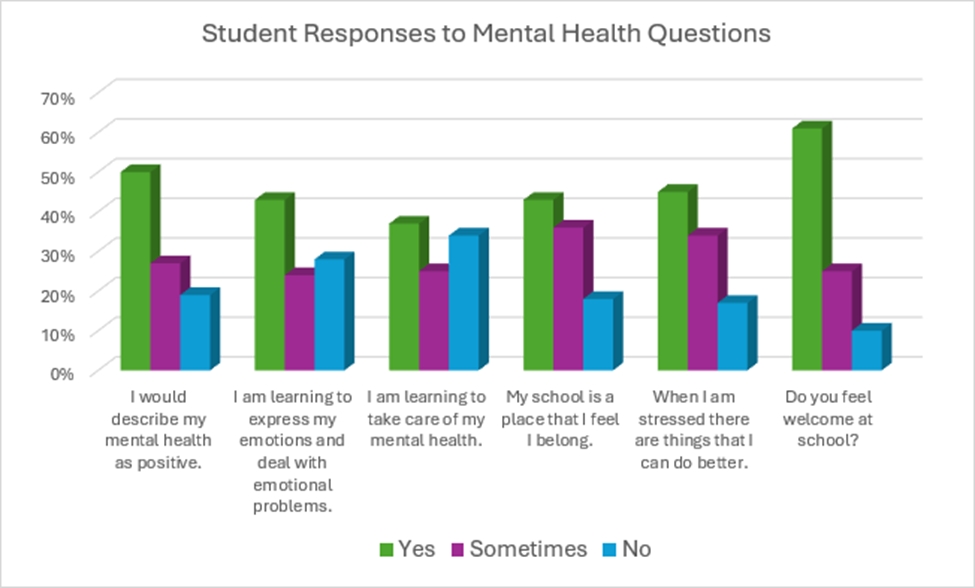
Based on this sample of information, while the numbers of yes and sometimes responses in this survey are encouraging, we know from the data that interventions on a school level are needed. If one in five students would not be able to describe their mental health as positive, or when 34% of all students surveyed do not believe they are learning enough to take care of their own mental health, those problems must be addressed.
Mental Health Action Plan:
The school incorporated a plan that worked to inform and educate our students on important aspects of learning about mental health and ways to manage the stresses they were feeling. Mental health awareness weeks were developed for both semesters. In both the first and second semesters, our Physical Education department organized a number of direct and related presentations and activities in direct and indirect support of mental health education. These included a presentation on the impact of nutrition on the life of a teen, the importance of positive relationships and setting personal boundaries. One of the presentations also focussed on the positive role of technology, including the use of artificial intelligence to be healthy and create a health plan. On the day that was focussed on how to be self aware of your own mental health, The students participated in a station activity. These stations included:
- Relaxation
- Art therapy
- Grateful writing
- Mindful eating
- Reflection
For this report, we have included a blank sample of the document our students worked off of and some sample responses.



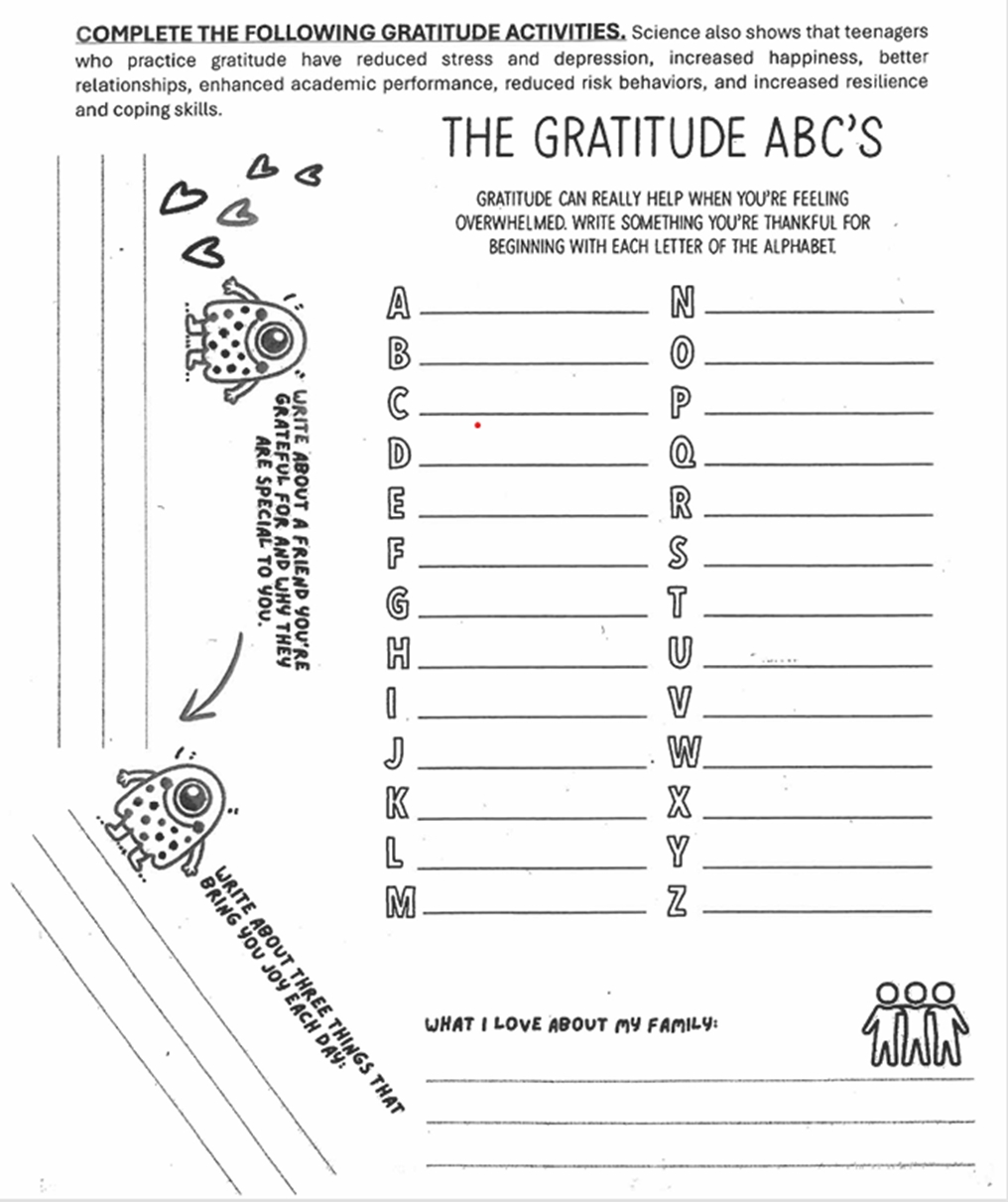


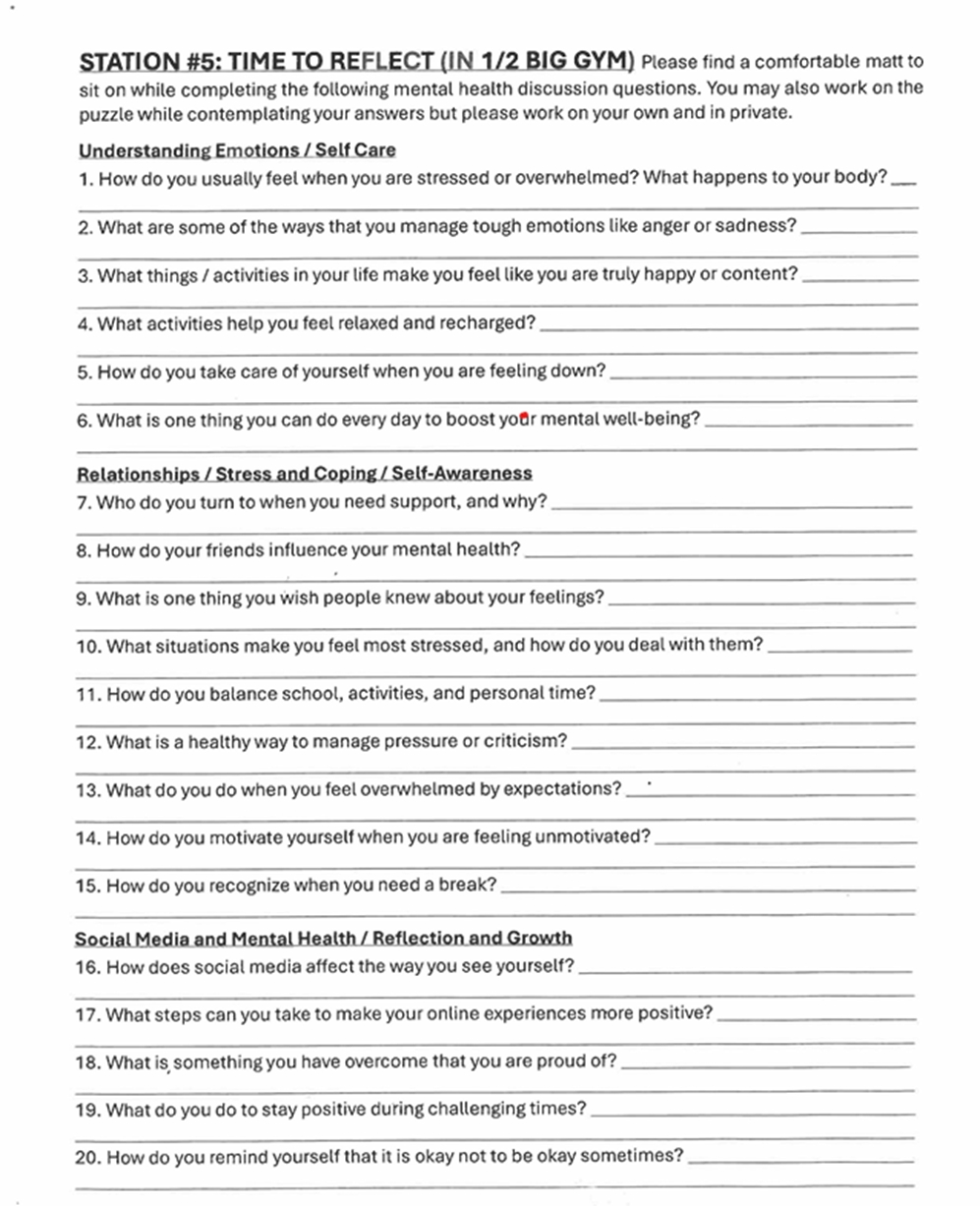

Examples of Student Responses
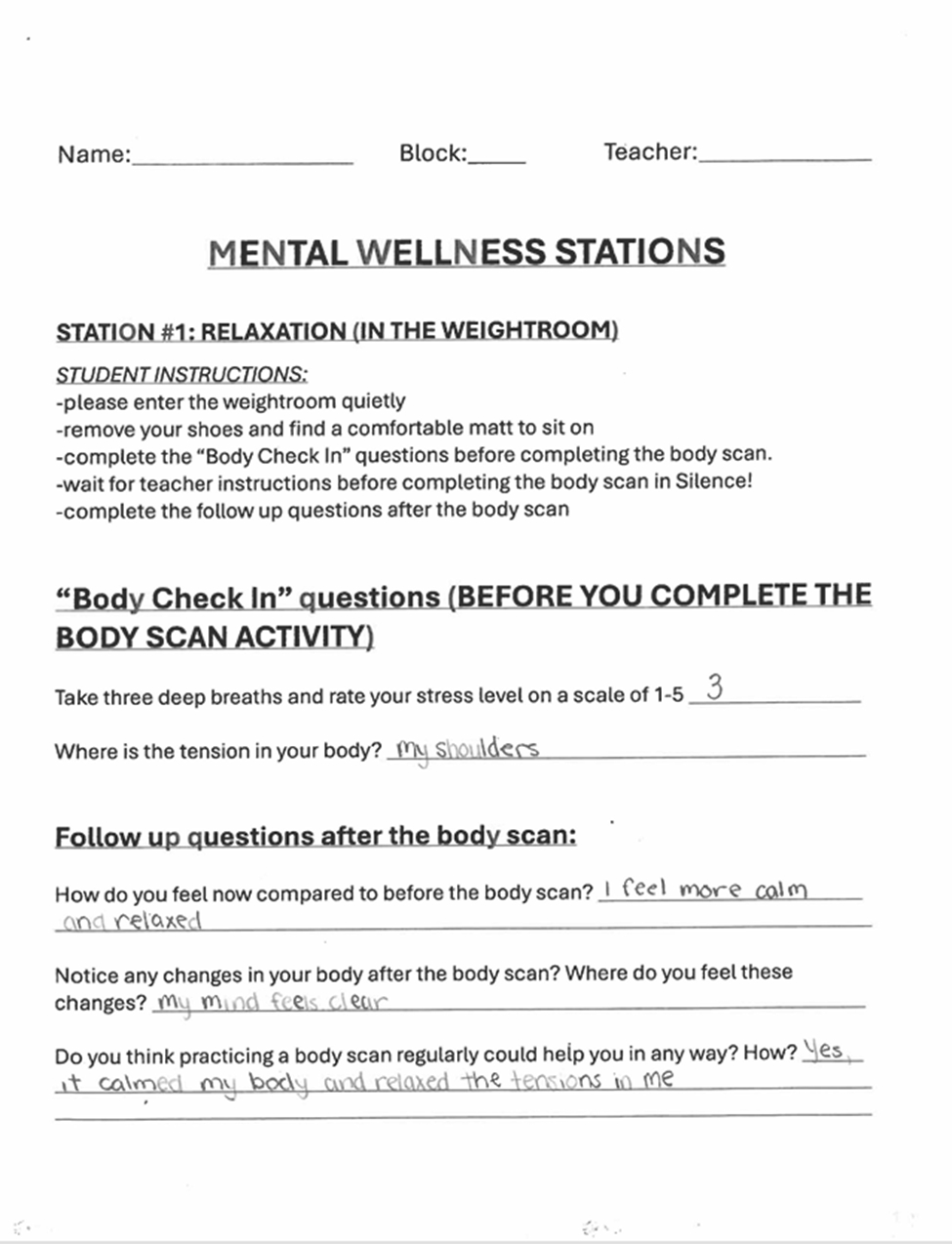


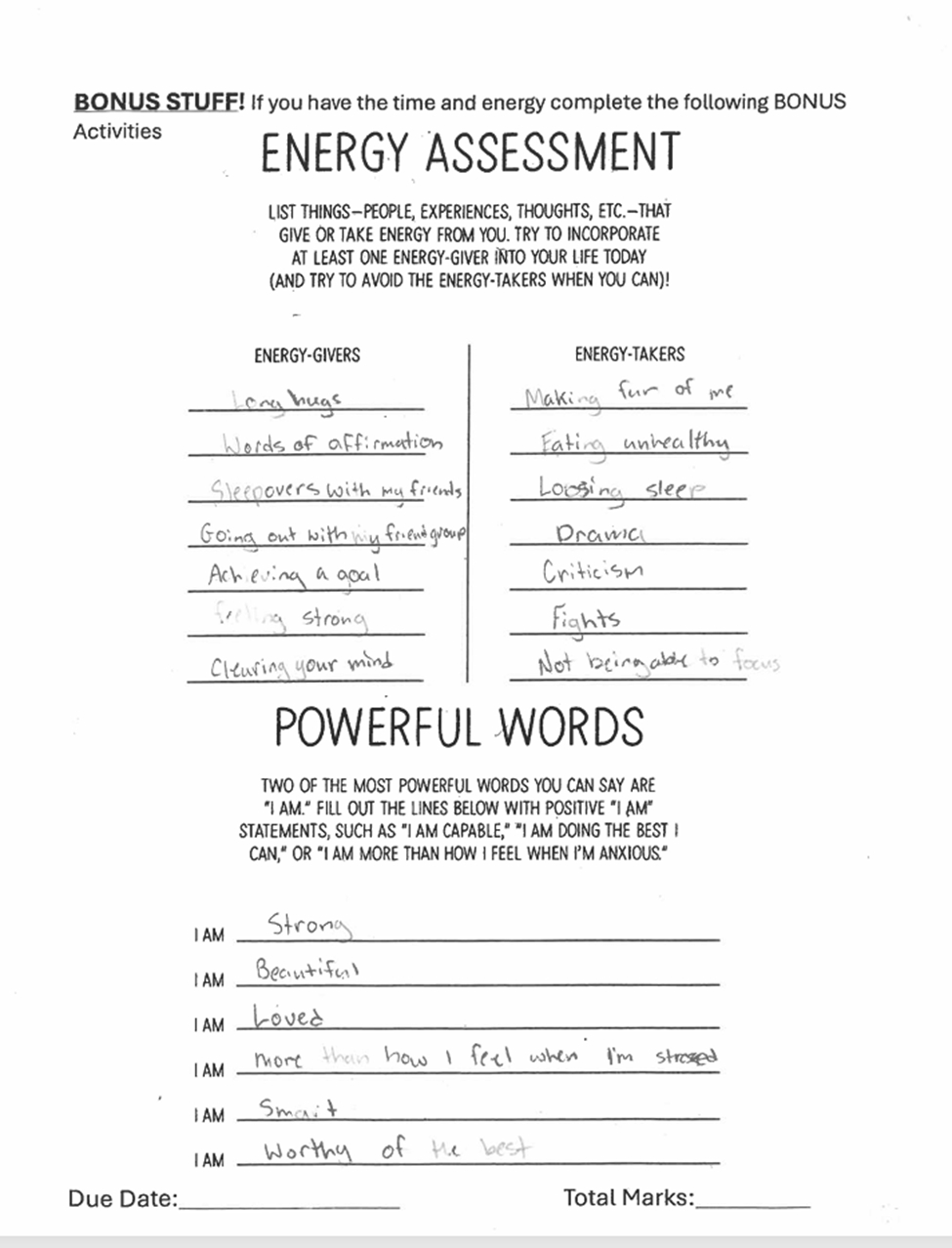
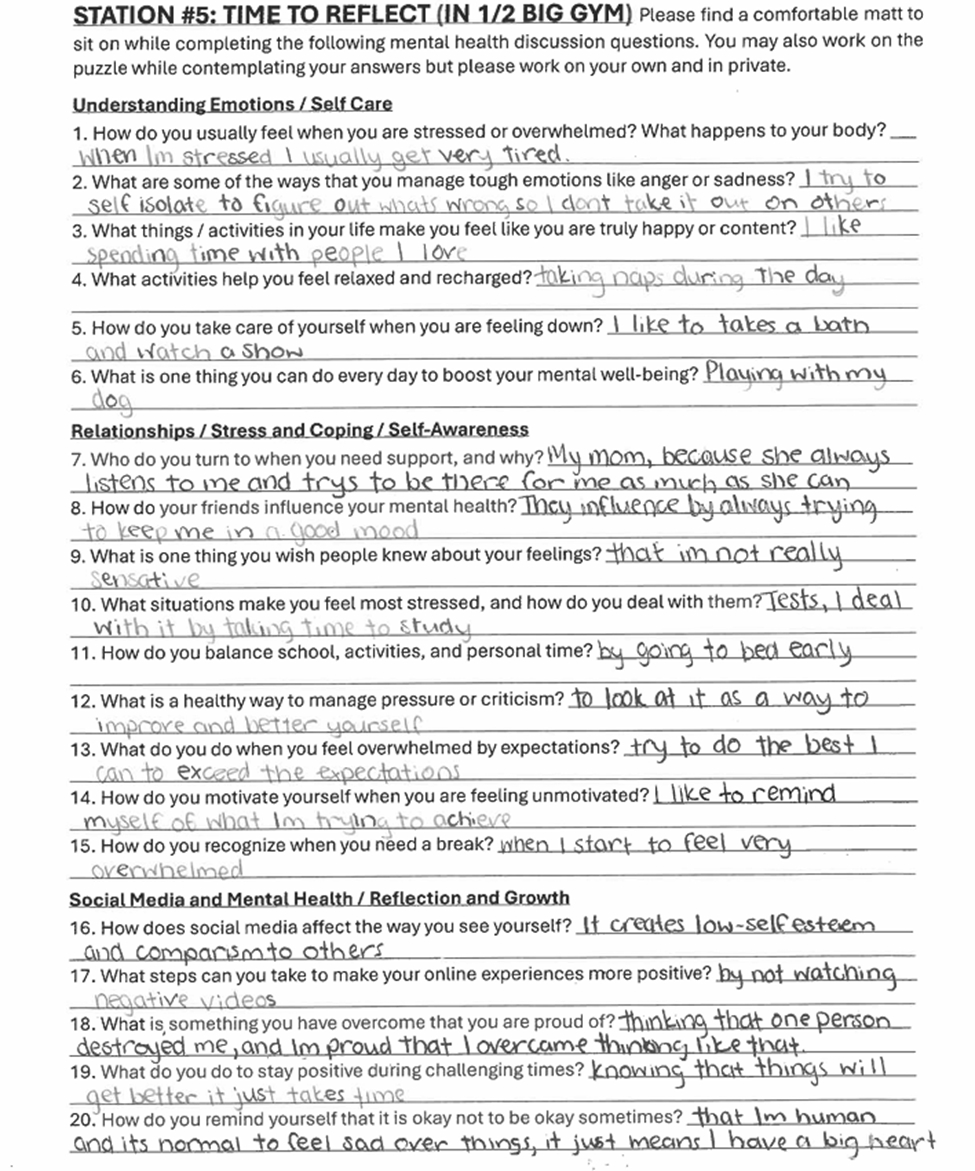
In the second semester, our Leadership department organized a second week of Mental Health guest speakers and lunchtime activities.
Monday: Positive messages to self: May 5th
- Our students went to the hub and wrote a message of positivity and stick it to the poster.
Tuesday: Wellness Jars May 6th
- Our students made a wellness jar decorated so that you can remind yourself to do things that are good for your mental health.
Wednesday: Sensory Day May 7th
- This was the chance to come to the hub and grab slime for just $1.
Thursday: Mental Health Kahoot/Yoga
- Our staff organized a mental health Kahoot where students could win prizes
- An instructor was brought in to conduct a yoga class
Friday: Wellness Fair and Bake Sale May 9th
- vendors from various organizations set up a number of booths for students to visit at lunch to talk about mental health.
Mental Health Week Special Presentations
Jack Taylor’s Presentation on Resilience:
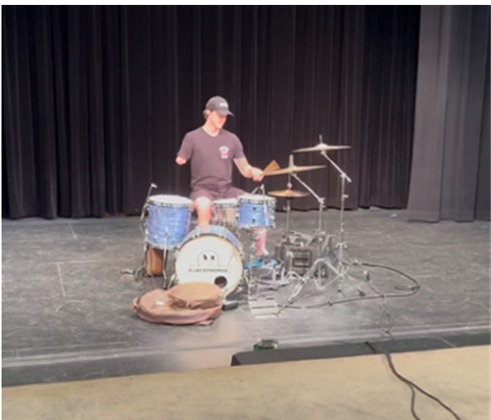
Our week started off with a presentation to staff and students by Jack Taylor. Jack was about to start his grade 12 year in high school when he suffered an accident at his workplace that resulted in the amputation of his arm just above the elbow. This caused him significant difficulties with his mental health, that lead eventually to him needing to deal with post traumatic stress.
One of Jack’s passions prior to his workplace accident had been drumming. He had real interest in joining a band and pursuing a career in music. It occurred to him one day that he could continue drumming, it would just be different. He would look to other musicians like Rick Allen (Def Leppard) for inspiration. He eventually started to overcome his mental health struggles through his work with a drum kit. He now does regular speaking engagements talking to students about resiliency, specifically that they can overcome any problem that they set their minds to, as well as being willing to seek out help when they have a significant problem that is affecting their mental health.
After the presentation, our students were asked to complete a learning survey on Jack’s presentation.
Regarding Stress
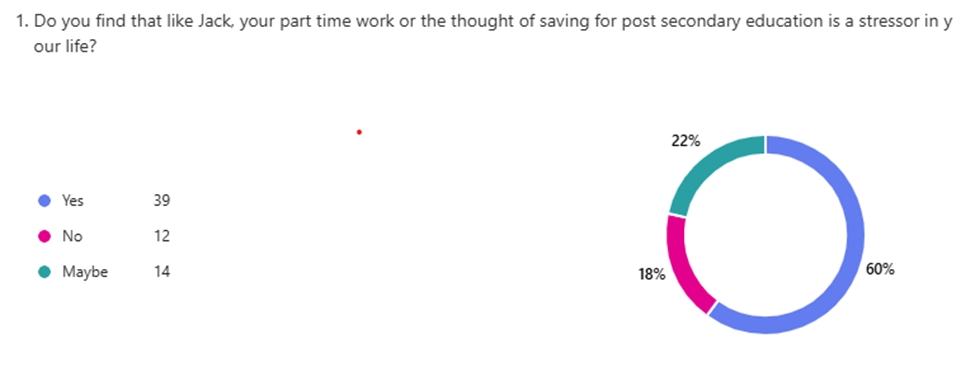
What are the top activities that help you when your mental health has been affected?
1, Music
2. Friends
3. Sports
4. video games
5. time with family and friends
Our students were asked about coping with stress, would they seek help right away or wait until they were ready. This question came directly from Jack’s presentation, as he stated that he waited until his 20’s to seek help, even though the accident happened in his teens.
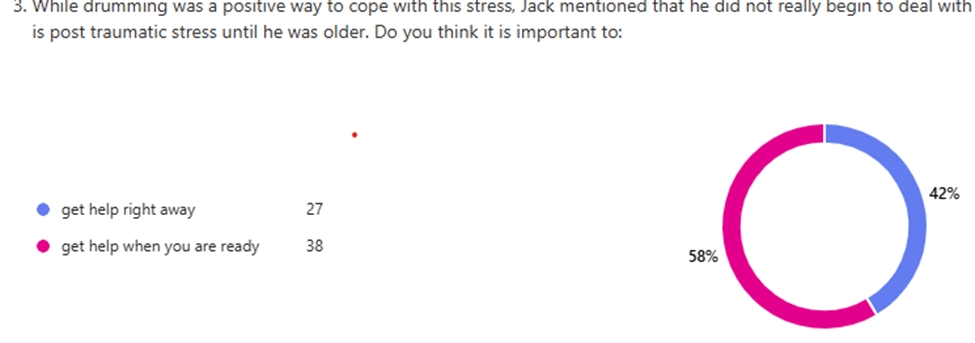
Students were asked an open ended question of who they would most rely on for help. The two most popular answers for our students were people their own age or parents and trusted adults.
We asked our students if they considered themselves resilient.
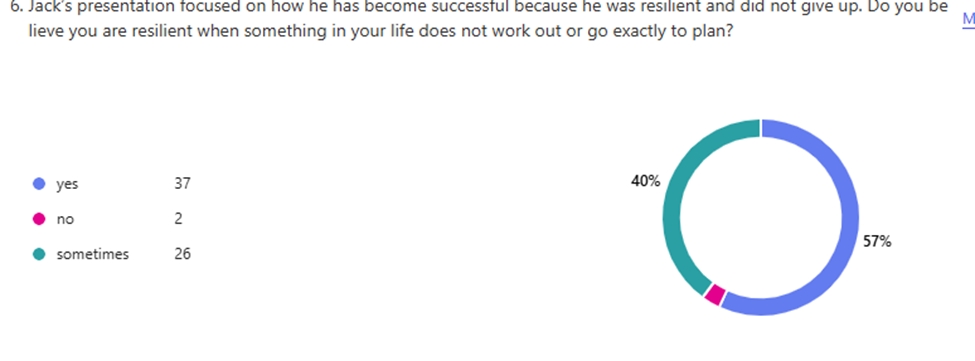
Our final question to the students was did they feel this presentation was helpful with regards to Mental Health awareness.
It was very effective and the presentation was super engaging and a fun way to educate and spread awareness for mental health.
This presentation enlightened me to take better initiative to learn more about mental health and how you should always put yourself before others through self love and compassion
It really encouraged me in speaking out about my feelings. In fact I’m thinking about talking to a counsellor today. I’ve bottled up my feelings for too long now.
Ahmad Jabbir’s presentation on treating mental fitness like we treat physical fitness

Ahmad Jabbir is a YouTube influencer and motivational speaker who has given many presentations on the topics of mental health. The focus of his presentation with our students was to draw the comparison to how many people will think and care and act when it comes to their physical fitness, but do not do anywhere near as much work on their mental fitness. He made an excellent analogy that all of our students could relate to when describing the difference between mental health and mental fitness. Mental health could be described as the power level of your cell phone battery, while mental fitness was charging the battery. His premise was that rather than letting our mental health get low (like a battery) that we employ a number of activities that would create a positive charge for our mental health, thus charging the battery before it gets low or worse yet, runs out of power to positively affect our mental health. His goal is to try and give those students who attend his sessions the mental fitness skills to be able to create a better self-concept.
Ahmad shared his story of being bullied in elementary school and then having significant issues with the fear of being bullied in high school. It was his high school basketball coach that gave him a first look into how to build his mental fitness to perform better in their games. He practiced those skills in university through journaling exercises, in which each day he would remind himself of the positive things that had occurred for him that day. He referred to these as the 3 small wins. This has led to the 7 mental fitness skills which are the main focus of his presentation. Ahmad was clear with these students that students did not need to practice all 7, that starting with one was a great way to begin their mental fitness journey.
Ahmad’s 7 Mental Fitness activities are:
- Find a way to get into nature
- Meditate or a similar activity
- Talk to someone about whatever troubles you
- Give something to someone
- Seek discomfort – train yourself to deal with minor stress, which trains the mind to deal with it.
- Celebrate the small wins, not just the major milestones
- Take your moon shot – try something you think is impossible.
Ahmad also suggested students could create their own, as this was not a list of the only activities that will work to strengthen mental fitness.
At the end of the presentation, our students were given a learning survey.

Most of our students responded that they felt that their mental health was low approximately 1-3 days a month. However, over 40% were experiencing a school week or more of low mental health. This definitely points to a greater need for awareness and check ins throughout the school year.
One of Ahmad’s early interventions in his own life was to journal about the three small wins he would have each day. When our students were asked about what they would consider their three small wins, the answers were incredibly varied. Doing well at school was the most popular answer among the respondents. The various responses are displayed in this wordle.

Our students were asked about Ahmad’s 7 mental fitness exercise idea. The first question was if they could pick only one, what would their top choice be to start a mental fitness routine. The top three responses were:
- Being in nature
- Talk to someone
- Meditate or do a similar activity
Our students were then asked to write briefly on whether the presentation was helpful in bringing awareness to the topic of mental health.
Yes. It was quite simple and easy for people to be engaged in though I would say it was quite relatable too.
It opened my eyes a little bit. From now on I have more activities/mental exercises to do.
I like the fact that he can explain accurately what mental health is.
Positive Personal and Cultural Identity and Social Responsibility
Our learners can identify their passions and interests and make connections to the CHS community.
"Connection is why we're here; it is what gives purpose and meaning to our lives." Brene Brown
In an effort to provide contexts for connection and a sense of belonging, our school has undertaken a number of initiatives aimed at increasing student engagement and sense of belonging at the school. We value celebrating each individual's personal identity and believe in creating an inclusive and safe space for all students. The following pictures provide just a small sample of the return to school activities that students engaged in this year. At CHS, teachers share their passions in clubs to connect with students outside of the classroom and build a community through shared interests. Students often volunteer their time in projects that give back and support both the school and local community. These events have also provided staff and students with an opportunity to learn from one another, celebrate diversity and nurture a culturally inclusive environment.
This is a photo our clubs day, which is held at the beginning of both semesters.
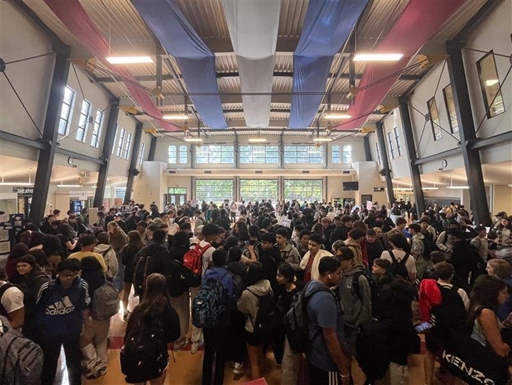
Our schools first debate club competition as a host.

Project Equal and the Halloween for Hunger Food Drive

OUR FOCUS
OUR FOCUS
Supporting students so they can graduate successfully, develop positive relationships, and nurture their passions and strengths to be positive, caring, inclusive community members is our focus at CHS. We aim for all students to be provided with daily opportunities to develop Social-Emotional learning skills and capabilities, as well as, build competence in the Core Competencies of Communication, Critical and Creative Thinking and Personal and Social Responsibility.
“ In the middle of every difficulty lies opportunity.” Albert Einstein
At CHS, our educators support students in developing positive and successful academic, social and emotional transitions in their journey through:
- Grade 7 into grade 8
- The exploration years (grade 8 and 9) into grade 10
- Grade 12 to a successful graduation and beyond
In order to identify our students' strengths and areas of growth, as well as, highlight and assess our supports, we tracked Social-Emotional Learning in a cohort of learners who were recommended for our skills for success program. The CHS skills for success program focuses on academic skill building, student connection, and social-emotional learning. Support is provided so students are able to develop a growth mindset and motivation to achieve their goals for the future.
Student Learning Goals
- Our learners can evaluate and explain Social-Emotional Learning strategies that promote well-being (i.e. self-awareness and reflection, strategies for mental well-being, responsible decision-making)
- Our learners can demonstrate an increased sense of belonging, school engagement and participation
- Our learners can successfully complete their courses and work towards graduation
Skills for Success
For some students, the struggle to meaningfully engage in school has been a greater challenge. Our support team worked this year to identify students in grade 9 through 12 that were at risk of not being successful in their course work, and thus also at risk of not graduating.
This cohort of students was supported throughout the year by a dedicated skills for success teacher, alongside the Youth Care Workers and Safe-School Liaisons. The students were given one block of time in their schedule, as it was thought that constant and direct support would be preferable to drop in or in-class support models. It was also the firm belief of the teacher in the program that to make the connections and build the relationships with the students, daily contact was required. The approach of the teacher was that of a skill builder, cheerleader and advocate. As different students required different supports, this class was also highly personalized. The teacher ensured that there was no homework, and that the skills being taught could be applied to the students’ other classes.
The teacher acted in the capacity of academic support, attendance support, social and emotional support as well as creating the safe space required for these students to succeed. The class engaged in learning in life skills, organization, and how to navigate and be successful in the school experience. A part of the class was also to equip these students with the skills necessary to build resiliency, self-regulation, compassion and engage in self awareness and conflict resolution.
This cohort of students learned about and practiced growth mindset strategies, explored goal setting and approaches to personal organization. In addition, this program monitored the student's academics, providing them with guidance and support so they could see success across all their classes.
There was a significant focus on not being judgmental of each other’s situations. The students were encouraged to try to understand and demonstrate compassion towards what other students were going through personally. It was hoped that by mixing the grades both junior and senior, a type of mentorship would begin. In addition, the teacher and students openly discussed the mental health supports available for anxiety, depression, suicidal ideation and trauma (past or present).
OUR NEXT STEPS
OUR NEXT STEPS
For the 2024/25 school year it was decided that all of our skills for success classes would be multi grade and include students from grade 9 – 12.
Students were asked to identify why they believed support from this class and this teacher was going to be helpful to them. As a cohort, they identified a number of barriers to their learning:
- Attendance issues
- Academic difficulties
- Lack of focus
- Mental Health / Stress
- Lack of support with large classes
- Sitting at a desk for too long
- Disconnected or not engaged in school
- Distractions
- Being in uncomfortable situations
- Not feeling connected to our school
We used these survey results to provide a framework for the supports that were offered. Given that so many of the factors listed affected each student differently, the actual supports put in place for students were very personalized. One factor which is not as quantifiable is this level of personalization. While some programs in our school are able to meet specific needs for specific students, this was not the case for a skills for success student. Each one of these students has a very different story and thus has a very different list of needs from the program.
Academic Success
The data taken from the students’ report cards showed a majority of students were benefiting from the supports of the class. The following graph illustrates this fact.

In addition to the report card data, our skills for success students were surveyed on how they felt about their academic performance this school year.

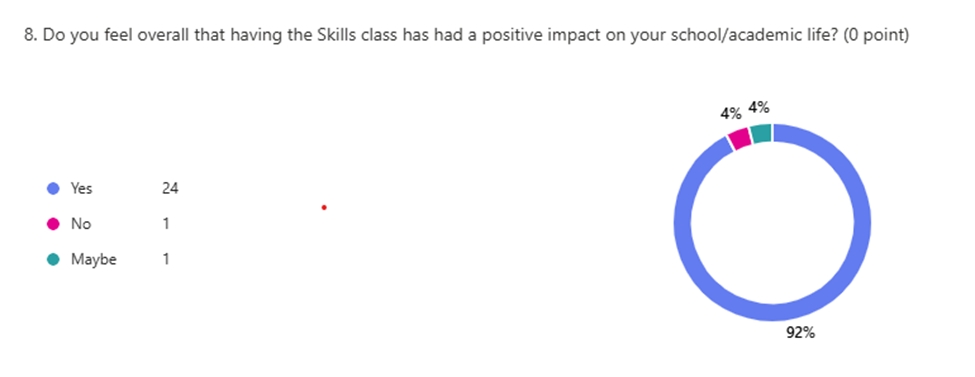
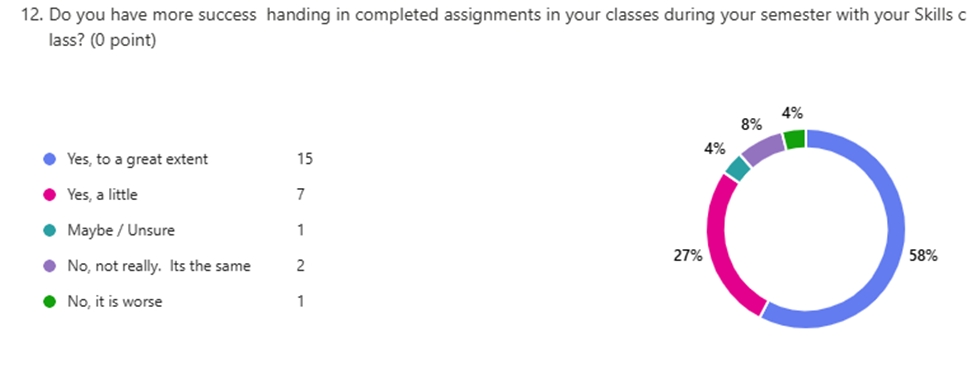

In addition, the students provided the following open-ended responses to a writing prompt.
Provide examples of where this class made a direct impact on you this year.
- i was struggling with my math and my teacher sat down with me one on one and talked through it with me
- I am probably would of failed environmental science last semester
- I had a lot of missing assignments that i wouldn’t have been able to complete if i didn’t have a skills class
- I had more 1 on 1 help with the work from my classes, skills class made me feel a lot less stressed with all my classes
- Handed in all my work
- I started doing math homework
- this class has helped me get most of my assignments handed in and overall, without i probably would failed most of my classes.
Name and describe any unexpected positive outcomes of this class
- actually, getting work done
- I handed in 3x more assignments on time.
- I finished a lot of English work and that got my grade up to a B
- I’m much more organized and getting my work handed in on time
- i got a lot more work done
- keeping up with all my work
Attendance and more importantly developing a connection to our school are also incredibly important factor to track. Our students were surveyed on both attendance and connection to our school and their learning.

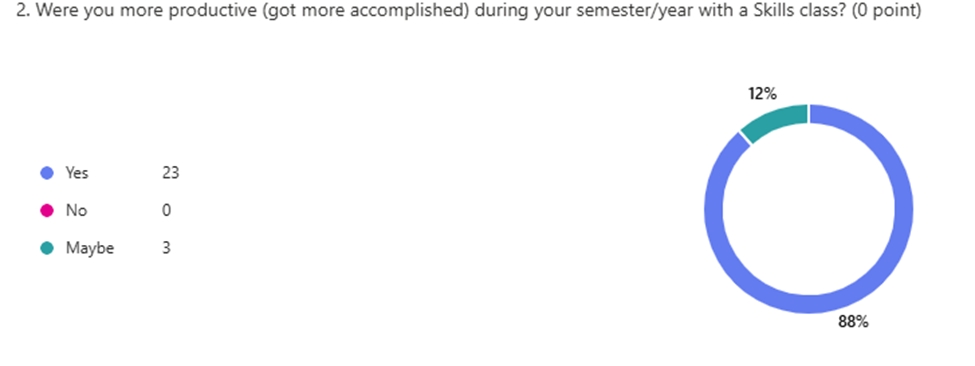

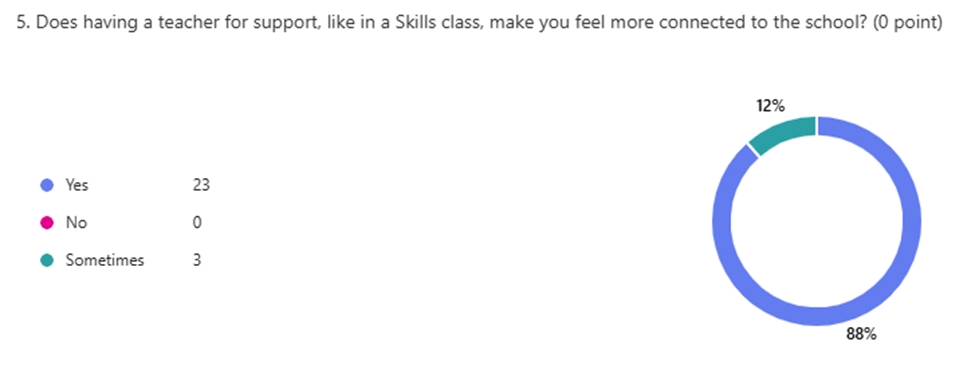


Our students also commented on how they felt about both attendance and connection to our school.
- my grades went up and attendance went up
- helped with every single class in attendance and grades.
- i was going through a lot of family trauma, parents divorced plus school was beating me down even more I fell into deep depression with everything going on also school. Until this skills class gave me a chance to calm down and talk also get the help I need with assignments. I was able to hand in assignments on regularly due date which before i could never do in addition to I was having the best grades on those assignments that I ever have, I had some of the best grades on assignments in my class because of Ms.Braley. I promise if I could have this course again it wouldn’t be a waste. I can guarantee this would help others also a bunch
- The class being multi graded helps because sometimes people from other grades have insight from experience on a project or assignment you're doing.
- the teacher was very supportive and positive and help us and talked us through the full semester and help us a lot with mental health because sometimes we can sit there colour and take a break in the day
Our learners are developing their Social-Emotional skills and capacities.
Our survey of the cohort revealed the following data on how the students felt about the class and mental health.
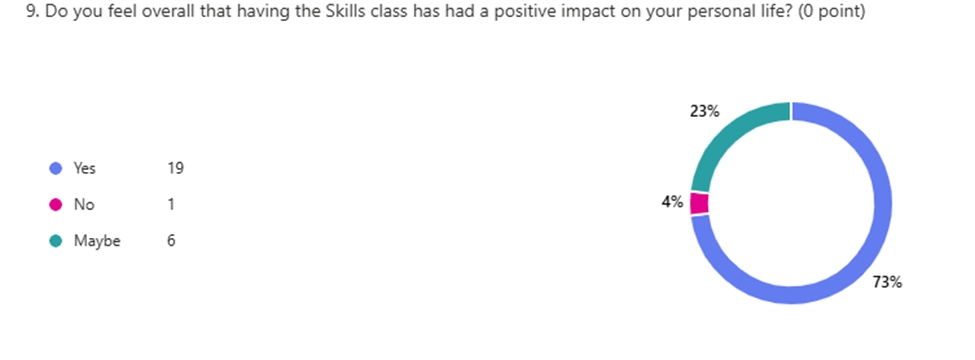
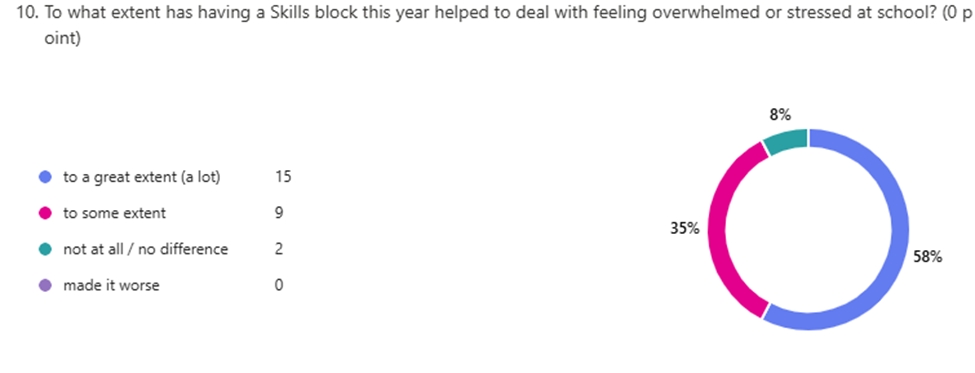
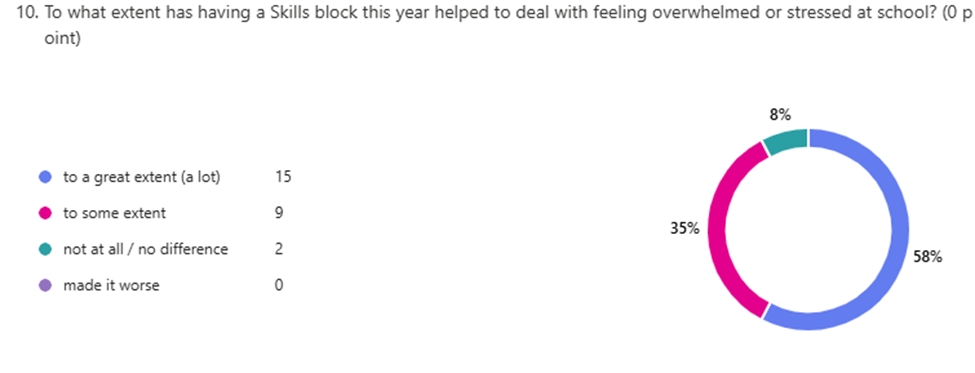
Our students also commented on their mental health and the impacts of the course.
Direct impact on you this year?
- made my stress level go down
- I’d have bad days come in I’d be able to sit out for a little/ go for a walk, and I’d have things explained to me in such easy ways.
- Help my mental health
- I have been more positive and my mental health state got better and i went from depressed to happy for this year and knowing that someone can help me was a big help
- It helped me stress less about school and also helped me hand in better quality work
- it really helped with my mental health, helped me focus and helped me get back on track.
Unexpected outcomes
- my mind being more positive than before and me also trying more harder at school and trying to get to school on time and trying to go to school more often
- Talking school more at my own pace which caused less stress
- learned more things about my mental health
- my mental health getting better was really unexpected.
- Nice to have the brain break
In the areas of self-awareness and reflection, mental well-being, responsible decision-making and positive connection and belonging, students demonstrated an increase in their ability to:
1. Identify strategies to promote mental well-being
2. Identify their passions, strengths and areas for growth
3. Reflect on their learning needs and styles
4. Identify a trusted adult or activity that is connecting them to the school
5. Continue to change their story for themselves and others.
Our learners can use self-assessment and reflection to develop awareness of their strengths, preferences and skills.
Student Weekly / Daily Learning Plans: The following sample provides examples of scaffolded organizational and self-management tools which students were encouraged to use throughout the semester. Students used the weekly planner (blue) to keep track of school and personal responsibilities. The daily planner (yellow) helped students to organize and prioritize work that they needed to complete. This provided students with a visual checklist, which eased some of the stressors of increasing academic rigor and social pressures.
